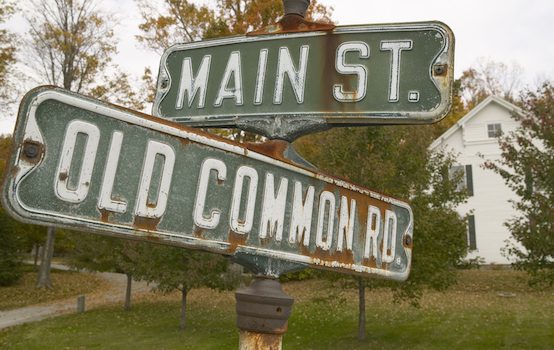Why Small Places Still Matter

My mother’s family settled in Oklahoma in 1889, in that great moment of pioneering pandemonium known as the Oklahoma Land Rush. They settled in the southwest part of the state along the Red River near a small farming community called Hess. Poor farmers from Texas and Tennessee, they came—like so many others—looking for good land to raise their crops, a house to call their home, and a community in which they could put down roots and raise a family, thankful for all that God had provided.
It was, perhaps, not the most ambitious vision of the good life, but it was their vision, and they set to the task with fervor. From their dugout they eventually built a house, and with their neighbors they helped to build the Baptist church, a local grocery and dry goods store, and a clubhouse for the ladies’ quilting club.
Today, if you were to drive through Hess, you might be tempted to call it nowhere—as if a place of so little global importance was not worthy of being called a place at all. But the value of a place, a home, a people, is not determined by its importance in world affairs or the global economy. Rather, it is in deep-seated affection that all true places have their origin—affection for the land, for the people, for the buildings and the memories they contain.
These kinds of affections are particular to each place. They cannot be manufactured or synthesized. Rather, they must be nurtured over generations, through the communal stories that make up our common life.
Today, America has almost entirely forgotten itself—shedding like a snake its local affections and destroying its best-loved places in the never-ending quest for “progress.” Amidst our sprawling modern life, we have lost the American Story. But in these times, the small places—our towns, our villages, our hamlets—offer a glimmer of hope. For inasmuch as they have participated in and suffered at the hands of the Great American Story, every small town preserves in part those local affections that arise from its own particular story.
From Plymouth, Massachusetts, settled by the Mayflower pilgrims escaping religious persecution, to Princeville, North Carolina, established following the Civil War by Americans newly freed from the shackles of slavery, every American small town has a story. And because these places have such stories, they are more genuine places than nearly anywhere else built in America today.
If we are to renew our culture and our nation, if we are to—as the Charter of the New Urbanism suggests— “dedicate ourselves to reclaiming our homes, blocks, streets, parks, neighborhoods, districts, towns, cities, regions, and environment,” then such reclamation must start with the small towns that still preserve the seed of local community within them. For as the poet and author Wendell Berry says, in this cause “the common denominator is the local community. Only the purpose of a coherent community, fully alive both in the world and in the minds of its members, can carry us beyond fragmentation, contradiction, and negativity, teaching us to preserve, not in opposition but in affirmation and affection, all things needful to make us glad to live.”
Ryan Terry is principal and managing partner with R + T Studio, a real estate development and consulting firm in Bryan/College Station, Texas. Follow New Urbs on Twitter for a feed dedicated to TAC’s coverage of cities, urbanism, and place.
Comments